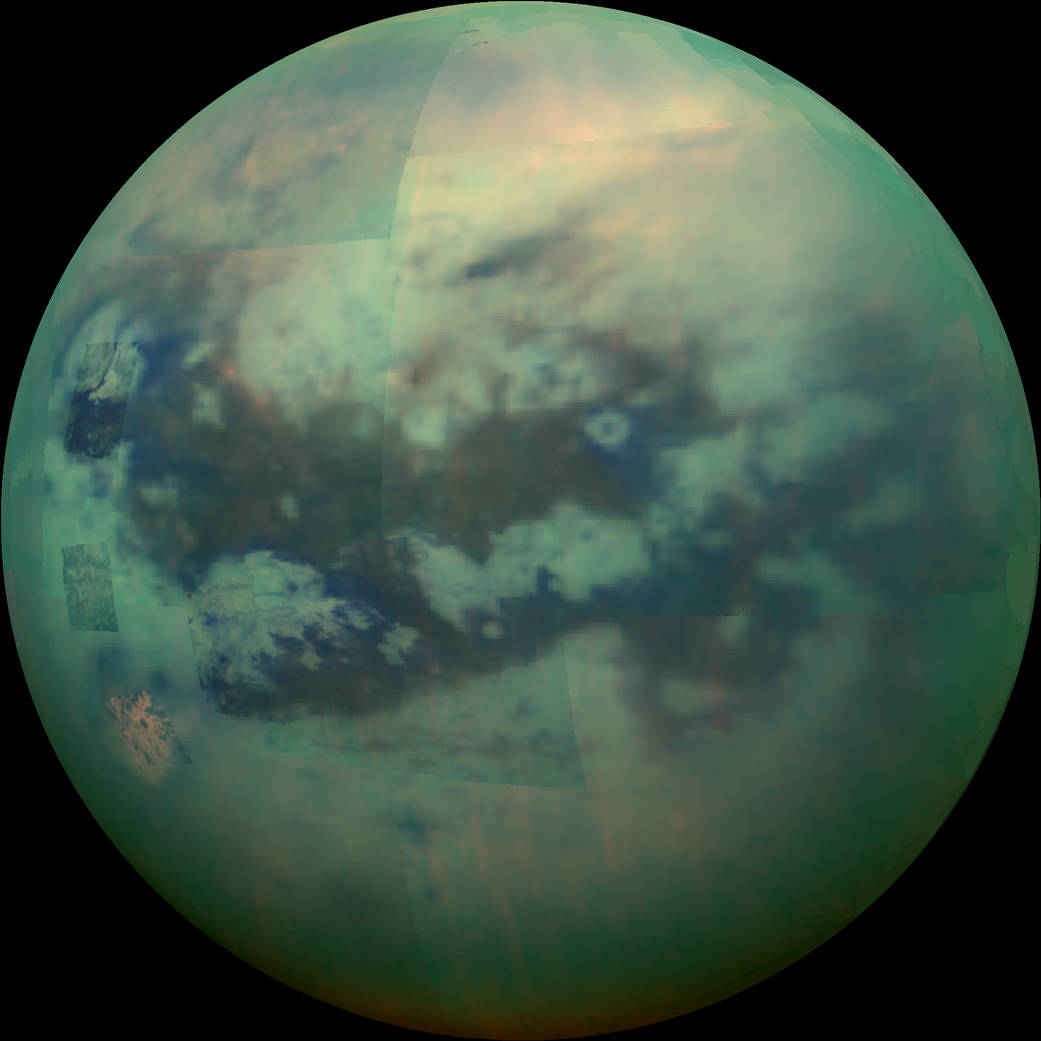Following a flyby from NASA’s Cassini spacecraft on November 13, 2015, infrared images reveal Earth-like colors from Saturn’s moon, Titan. In a mission titled “T-114,” the spacecraft got as close as 6,200 miles (10,000 kilometers) to take the photos.
NASA considers Titan to be “one of the most Earth-like worlds we have found to date.” This does not mean that the moon is capable of supporting human life however, The Washington Post points out. While the atmosphere is similar to that of Earth’s, being predominately nitrogen in nature, methane takes the place of oxygen in this desolate world. Plus, the moon averages a temperature of -290 degrees Fahrenheit, making it all but unlivable with mankind’s current technology.
The photos were taken using the spacecraft’s visual and infrared mapping spectrometer (VIMS), giving Cassini the ability to penetrate Titan’s hazy atmosphere and reveal its surface.
The views from the images are taken mostly from the Saturn-facing hemisphere of Titan, reports Fox News, and features regions from Fensal in the north, to Aztlan in the south, forming a sideways letter H.
According to NASA, these are also the best images of Menrva, Titan’s largest confirmed impact crater. They also provide in-depth details of the eastern Xanadu terrain, as well as the Hotei Regio basin.
This is not the first time Cassini photographed Titan in this way. Cassini took photos with its VIMS instrument during the “T-9” flyby on December 26, 2005.
The new photos, however, are significantly different. It is late spring on the northern hemisphere of the Saturnian year, causing the southern latitudes of the moon to appear darker while the northern latitudes appear lighter.
The Cassini spacecraft launched in 1997. It is a cooperative project between NASA, the European Space Agency, and the Italian Space Agency. Cassini achieved its first orbit around Saturn in July 2004 and is expected to uncover the mysteries of the planet and its many moons (the current number is 62, with more awaiting official names) until 2017, where it will finally crash into Saturn’s atmosphere.
























